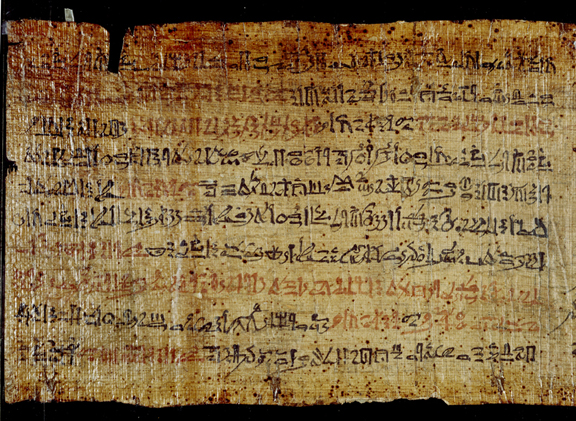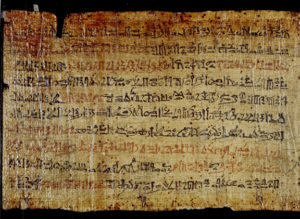More Proof of the Exodus
After my recent posts on the archaeological proofs of the Biblical Exodus (Recent Find Strengthens my Timeline for The Biblical Exodus and Proof of the Exodus), some of you have written asking me to comment on the Ipuwer Papyrus.
For those who don’t know, the Ipuwer Papyrus is basically the story of the Biblical Exodus, from an Egyptian point of view. It corroborates the Biblical account from a writer who is hostile to the Israelites. His name is Ipuwer. It’s the longest Egyptian papyrus we have. It’s housed in the National Archaeological Museum in Leiden, Holland. In it, the Egyptian sage laments the chaos in Egyptian society caused by Semites in the Delta. The pessimism of the text is remarkable because it isn’t common in Egyptian writings. It was found in 1828 in Memphis, near the pyramids in Saqqara. The text explicitly describes the chaos caused by natural disasters, the fact that slaves have gained freedom and that the rich have become poor. In the last part of the Papyrus, there’s a dialogue between Ipuwer and a deity called “The Lord of All”. Scholars have dismissed the Papyrus as a work of fiction and describe it as part of a “genre”. A “genre” is a French word for a series, class or category of stories that share common themes. If you’re unique, you’re not a “genre”. The fact is that there is no papyrus like the Ipuwer Papyrus.
Scholars mock those who are silly enough to see similarities between the Egyptian text and the Bible. But why is it silly to see what is clearly there? The text states that “the tribes of the desert have risen above the Egyptians”. I wonder who the “tribes of the desert” can be? Israel, of course. The text states, in a direct parallel to the Book of Exodus which describes the Israelites taking Egypt’s gold (Exodus 12:35), that “the servant takes what he finds”. It explicitly states that “poor men have become wealthy”. It says that a man who could not afford to have “sandals for himself is now a possessor of riches”. In direct parallel to the Biblical plagues (Exodus 12:13), the Papyrus states that “pestilence is throughout the land, blood is everywhere, death is everywhere”. It states that the once powerful are in “distress”, while “the poor man is full of joy”. It describes earthquakes, “the land turns around as does a potter’s wheel”. Further, in almost the same words as the Bible which states that the water turned to blood, the Ipuwer Papyrus says “the river is blood”.
Interestingly, the Bible is explicit that the slaves carried great quantities of riches out of Egypt. Many parts of the desert tabernacle are made of pure gold. The Bible also states that the “golden calf” was made from the jewelry of men (Exodus 32:1-4). The Ipuwer Papyrus mirrors this. It states that “gold and lapis lazuli, silver and turquoise….are strung on the necks of maidservants”. It seems that the Israelite slaves bankrupted Egypt. The Papyrus states “gold is lacking…the palace is despoiled”. In desperation, Ipuwer states that “all is ruined”. It literally describes the plagues, including the devastating hail, and then describes the Exodus itself. It states that “those who were Egyptians [have become] foreigners” i.e., they left! The Papyrus also helps us date the Exodus to the so-called “Hyksos Period” in Egyptian history i.e., approximately 1500 BCE. This perfectly coincides with the Biblical timeline – meaning, that the Exodus took place approximately 500 years prior to the building of the Temple of Solomon in the 10th century BCE. Perfect synchronicity!
Here is a link to the translation of the papyrus. Happy decoding: http://www.reshafim.org.il/ad/egypt/texts/ipuwer.htm
It’s time that scholars debate the evidence, rather than dismiss it or suppress it.


